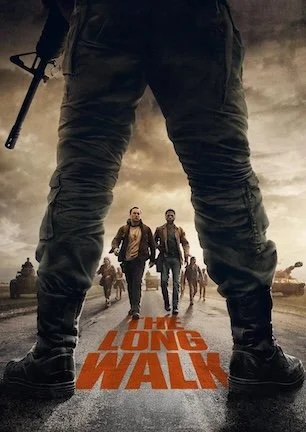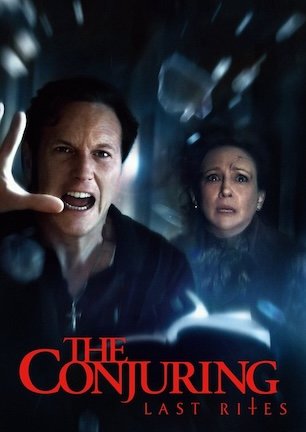Studio: Apple Original Films
Director: Scott Derrickson
Writer: Zach Dean
Producer: David Ellison, Dana Goldberg, Don Granger, Scott Derrickson, C. Robert Cargill, Sherryl Clark, Adam Kolbrenner, Zach Dean, Gregory Goodman
Stars: Miles Teller, Anya Taylor-Joy, Sope Dirisu, Sigourney Weaver
Review Score:
Summary:
Two elite snipers from different nations form an unexpected romance while guarding opposite sides of a gorge they must protect against the emergence of mysterious creatures.
Review:
Since WWII, Eastern and Western nations have been guarding something so secret, no head of state has known about it, even though their countries honor a pact to maintain the mission dating back almost 80 years. Every 365 days, a single soldier from each hemisphere is sent to an undisclosed location where observation towers are posted on either side of a massive gorge. The two operatives are to have no outside contact. They are not permitted to talk to each other, either. Their assignment is to merely monitor the area, and make sure nothing ever crawls its way out of the gorge and onto the surface.
But if America and Russia didn’t want their respective guardians to communicate, much less form a mutual attraction, they shouldn’t have recruited Miles Teller and Anya Taylor-Joy for the operation. With model-like looks to complement their elite sniper skills, they don’t make it two months before protocol is breached and their characters, Levi and Drasa, begin using written messages and binoculars to build a romantic bond. That’s just too much Hollywood hotness to hide in a forest and expect everyone to keep their hands to themselves for 12 months.
Tours of duty start in September. October through January isn’t a particularly eventful period, other than minor moments of long-distance exchanges like drunkenly dancing on Drasa’s birthday and remotely playing chess together. A runtime tipping over two hours puts a lot of pressure on two people to carry an entire movie with minimal verbal dialogue. Teller and Taylor-Joy channel ample charm to keep “The Gorge” chugging through the rhythm’s valleys, though the gradual build to their relationship can still slow the pulse of both the pace and the viewer.
Come February, Levi and Drasa get their first physical interaction courtesy of a zipline that sends Levi across the chasm for an intimate evening with Drasa. However, it doesn’t send him back in the morning. Conveniently for the script, but inconveniently for the couple, a sudden landmine explosion snaps Levi’s cable, hurtling him into the fog-shrouded canyon below. Drasa immediately parachutes after her new love interest.
With “The Gorge” now past its midpoint, action finally ignites in earnest. The film’s second half follows Levi and Drasa’s exploration of a “lost world” whose mysteries and monsters are beyond what both of them imagined. They already knew next to nothing about their mission. What they uncover next about who sent them there, why, and what’s really down in the depths introduces more questions, though none are more dire than how Levi and Drasa will survive a nightmarish realm from which no human has ever returned.
From notable names like “Doctor Strange” director Scott Derrickson and featured actor Sigourney Weaver, to shooting in various locations spanning the globe, it’s obvious it cost millions of dollars to make “The Gorge.” Yet you can also tell the movie is styled for straight-to-streaming standards rather than as a theatrical studio thriller, in part because you can’t always see the money onscreen, literally.
Although Canada, Norway, England, and Scotland are cited among countries where production took place, it looks like a fair majority of filming occurred in front of a screen, similar to how Disney produces “Star Wars” TV. End credits list too many artists to count, with individual FX houses numbering over a dozen. “The Gorge” features several intense sequences, but not so many spectacles that this many modelers, mocappers, and technical engineers would be necessary unless they were adding computer-generated elements to virtually every frame.
With this much work being done, it’s an odd choice for darkness to diminish so much of it. Above ground, the main monsters, called “hollow men” from the T.S. Eliot poem, naturally know to only attack after sunset. Story-wise, that might make sense for them to use the cover of night. Visually, that makes less sense for an audience squinting to see creepy creations getting lost in blizzards of animated muzzle flashes and inky shadows.
Once Levi and Drasa descend into the titular location, even that set gets obscured in thick yellow mist during daytime, and thick purple smoke at night. There, the duo battles through hollow men on horseback on their way to a spooky building where remaining exposition, previously delivered by secondary characters whose only purpose is to provide information, anxiously awaits discovery. These new details include serendipitous instructions on how to destroy the gorge, a moment that immediately makes the rest of the movie a waiting game for “Chekhov’s self-destruct sequence” to activate.
Since “The Gorge” finds contentment as a homogenized action-adventure, formula provides enough economy fuel to hold a steady speed through routine romance as well as predictable plotting based on boilerplate beats. Just don’t get caught waiting for the film to exceed the posted limit in any individual lane. “The Gorge” is a place where even the world’s most resourceful mercenary can still be a distressed damsel in need of heroic rescue. The weird world created for “The Gorge” has potential for further fiction, although it might work better in a book, where an active imagination can shine brighter lights on the creatures and concepts than the movie’s limited lighting and narrowed narrative ever do.
Review Score: 60






It’s a better idea to lighten up on the outrage and enjoy “Predator: Badlands” for its high value as an action-intensive outer space adventure.